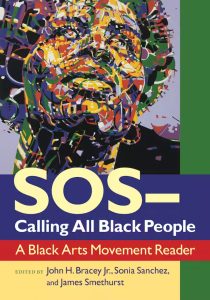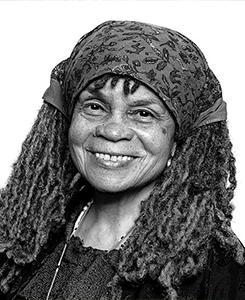Upcoming Free Online Lectures:
Stella Adler Center for the Arts presents
S.O.S. Calling All Black People: the Black Arts Movement
a two-part lecture with
Sonia Sanchez and James Edward Smethurst
Lecture 1: Monday, September 11th at 7:30pm (via Zoom)
Lecture 2 (NEW DATE): Monday, November 6th at 7:30pm (via Zoom)



From Artistic Director Tom Oppenheim:
This two-part lecture with Sonia Sanchez and James Smethurst about the Black Arts Movement is based on the book they co-edited along with the late great John H. Bracy entitled SOS-Calling All Black People: A Black Arts Movement Reader. This book has played a major role in the life and evolution of the Studio. It inspired what was originally going to be an August Wilson Summer Intensive to become the Black Arts Institute, offered in partnership with the Billie Holiday Theater since 2018.
From University of Massachusetts Press, the publisher:
This volume brings together a broad range of key writings from the Black Arts Movement of the 1960s and 1970s, among the most significant cultural movements in American history. The aesthetic counterpart of the Black Power movement, it burst onto the scene in the form of artists’ circles, writers’ workshops, drama groups, dance troupes, new publishing ventures, bookstores, and cultural centers and had a presence in practically every community and college campus with an appreciable African American population. Black Arts activists extended its reach even further through magazines such as Ebony and Jet, on television shows such as Soul! and Like It Is, and on radio programs.
Many of the movement’s leading artists, including Ed Bullins, Nikki Giovanni, Woodie King, Haki Madhubuti, Sonia Sanchez, Askia Touré, and Val Gray Ward remain artistically productive today. Its influence can also be seen in the work of later artists, from the writers Toni Morrison, John Edgar Wideman, and August Wilson to actors Avery Brooks, Danny Glover, and Samuel L. Jackson, to hip hop artists Mos Def, Talib Kweli, and Chuck D.
SOS—Calling All Black People includes works of fiction, poetry, and drama in addition to critical writings on issues of politics, aesthetics, and gender. It covers topics ranging from the legacy of Malcolm X and the impact of John Coltrane’s jazz to the tenets of the Black Panther Party and the music of Motown. The editors have provided a substantial introduction outlining the nature, history, and legacy of the Black Arts Movement as well as the principles by which the anthology was assembled.
